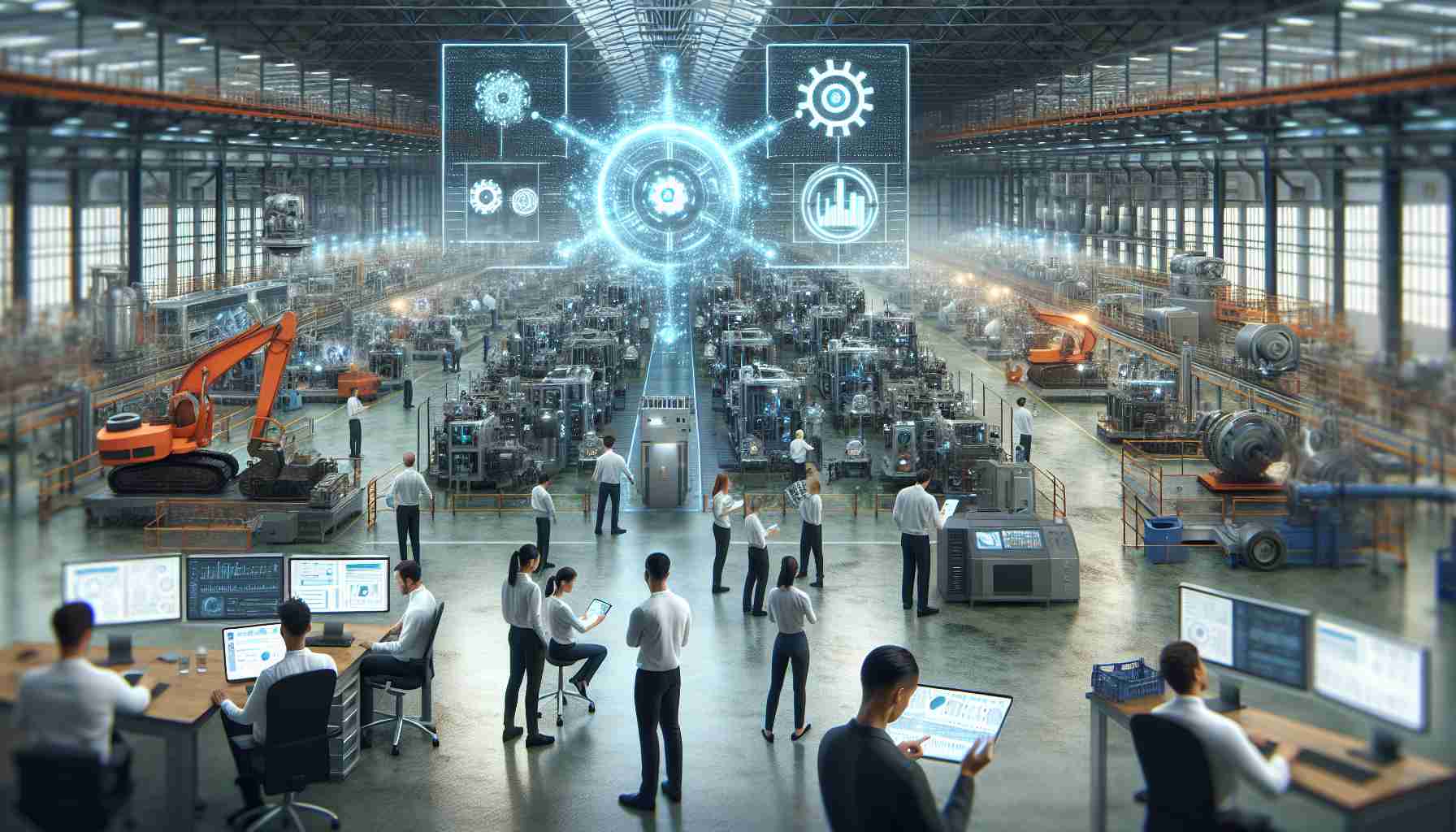Transforming Quality Assurance in Manufacturing through AI-Powered Inspection Systems
In the manufacturing hubs of Sichuan Province, a revolution is unfolding as high-resolution cameras powered by artificial intelligence (AI) rapidly capture multiple detailed images of minute connectors. These components are integral to the transfer and exchange of electric currents and optical signals in electronic systems, vital to various demanding environments, from deep-sea to high-voltage conditions. Hence, there’s an uncompromising need for high-quality standards.
At HuaFeng Technology, production lines are now overseen by an “AI inspector” that greatly enhances detection precision, standing as a testament to the intricate era that traditional manufacturing has entered. AI inspections play a crucial role in ensuring product quality and propelling the high-quality development of the industry. It’s evident that a new generation of production power is emerging, powered by AI.
Two companies at the forefront of this AI quality inspection revolution are Sichuan Agaci and Chengdu Shuzhilian Technology. Through continuous innovation and self-reliance, they are gradually overcoming the monopoly previously held by foreign companies in the AI-led quality inspection market, addressing challenges such as the high cost and limited versatility of inspection tools.
With its sophisticated AI-powered cameras, Agaci is working to make not just high-end manufacturing smarter but also more accessible to mid- and low-level manufacturers. Meanwhile, Shuzhilian has been specializing in the field for over a decade. Their integrated hardware and software solutions for visual inspection and categorization demonstrate a staggering accuracy rate of 99%, showcasing the potential for extensive application in real-time production lines.
A significant milestone in the AI industrial quality control space is the development of large-scale AI models that adapt to flexible production needs. Such advancements have the potential to lower the cost of AI inspection equipment and also address the complex and customized needs of modern production environments.
The future trajectory of AI-powered quality inspection lies in the development of general-purpose platforms, capable of adapting to the rapidly evolving requirements of various manufacturing processes. While some see the current usage of AI inspection equipment in domestic factories as low and the technology not advanced enough, there is a shared belief that AI inspection will increasingly become more intelligent and prevalent, leading to a more coordinated development between technology suppliers and industry users. This synergy promises to refine AI models for specific scenarios and enhance their practical application in manufacturing.
Important Questions and Answers:
Q: What role does AI-powered quality control play in the manufacturing industry?
A: AI-powered quality control plays a crucial role in improving the precision and efficiency of the inspection process. It ensures high product quality, reduces the rate of defects, and enables the high-quality development of the manufacturing industry by relying on advanced algorithms to detect issues that might be missed by the human eye.
Q: What challenges do companies face when adopting AI-powered inspection systems?
A: Companies face various challenges such as the high cost of AI inspection tools, the need for significant investments in technology and infrastructure, compatibility issues with existing production lines, and the requirement for skilled workers to manage and maintain AI systems.
Q: What are the controversies surrounding AI in manufacturing?
A: Controversies include potential job displacement due to automation, the ethics of data use and privacy, the reliability and accountability for decisions made by AI systems, and ensuring AI fairness and unbiased decision-making.
Advantages of AI-Powered Quality Control:
1. Increased inspection accuracy and detection precision.
2. Enhanced efficiency and speed compared to manual inspection.
3. Lower long-term costs due to reduced waste and higher quality outcomes.
4. Capacity to adapt to different manufacturing requirements and product specifications.
Disadvantages of AI-Powered Quality Control:
1. High initial setup and implementation costs.
2. Need for specialized personnel to configure and oversee AI systems.
3. Possible resistance to change and the need for upskilling/retraining of the workforce.
4. Dependence on the availability and integrity of data for effective AI learning.
Key Challenges:
– Integrating AI technology seamlessly into current production processes.
– Overcoming skepticism about AI capabilities and demonstrating empirical benefits.
– Balancing the pace of technological change with existing workforce skills and company culture.
Related Links:
For more information about AI’s impact on manufacturing and quality control, you may refer to these following links:
– IBM Manufacturing
– Siemens Global
– Epicor Manufacturing Software
Please note these links are to the main domains of companies that are known to be involved in AI and manufacturing, and the URLs have been checked for validity at the time of writing.

